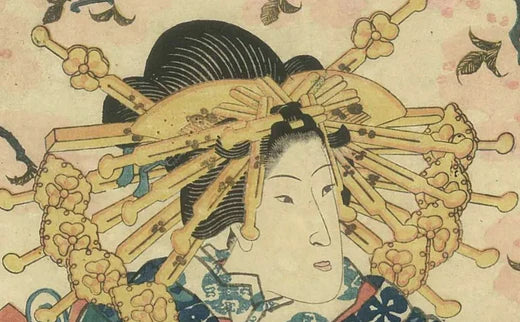
Courtesan

Courtesans (oiran), in defiance of laws prohibiting sex workers from wearing extravagant fashions, donned intentionally impractical outfits as visual representations of their influence. The obi belt of an oiran was always tied at the front, which had the practical use of being easier to untie than one made at the back, seeing that courtesans would sleep with their clients this was a necessary aspect of their clothing and one that enticed men.
In the above print, the courtesan Nagao wears a lavish attire composed of many layers of luxurious kimono. The red obi sash, tied in front, is visible under her overcoats. She also wears the traditional clogs or geta, and an array of prominent hairpins. Accompanied by two maidservants, equally lavishly clad, an oiran would parade every afternoon in such an attire to her rendezvous with a client. They were observed by clients of the pleasure quarters, the passersby, as well as the Ukiyo-e prints designers who would thus get inspiration for their artwork. Images of top courtesans with their maidservants, wearing lavish clothes, became an archetypal theme of Ukiyo-e visual culture, and a vehicle of new fashions spreading from the pleasure district to the city of Edo and beyond.

Courtesan Nagato of the Owariya by Sencho (c. 1840)
Arguing that hairpins were a necessary tool of their trade, used to clean the ears of wealthy clients, courtesans avoided paying the taxes usually levied on these accessories. As such, an overabundance of hairpins became a symbol of their profession, further distinguishing them from lower ranking sex workers and entertainers.

